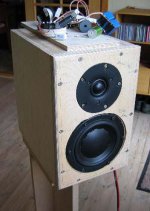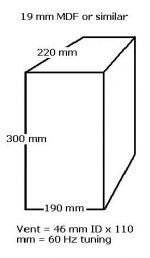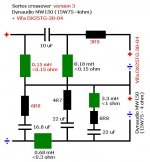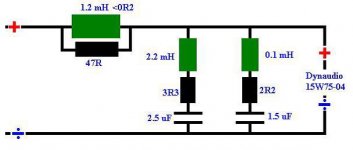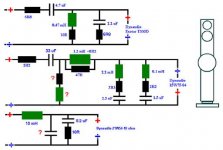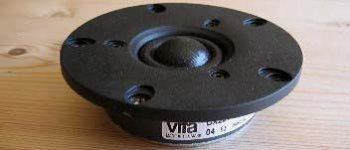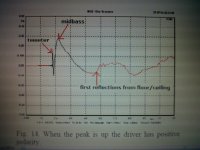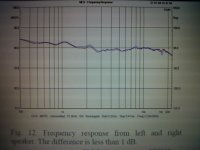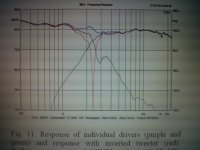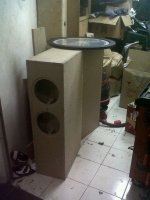Hi ...
i want to build 2 way speaker + subwofer
use T330D & 15W75 and 24W100 (2)
2 way speaker based on Koapong Mini Monitor
I heard the T330D & Scan Speak 8545 in my friend house
speaker looks great in high and the sound is very beautiful
My friend build that speaker based on a computer simulation
Please GOOGLE koapong mini monitor (Riset by Troel Gravesen)
for complete information (I found those link was gone from
soriaudio after i post this thread)
Thank you
i want to build 2 way speaker + subwofer
use T330D & 15W75 and 24W100 (2)
2 way speaker based on Koapong Mini Monitor
I heard the T330D & Scan Speak 8545 in my friend house
speaker looks great in high and the sound is very beautiful
My friend build that speaker based on a computer simulation
Please GOOGLE koapong mini monitor (Riset by Troel Gravesen)
for complete information (I found those link was gone from
soriaudio after i post this thread)
Thank you
Attachments
Last edited:
This is the file i found in soriaudio [ No Edit ]
Koapong, mini-monitor 1. August, 2004
The reason for this construction came from Koapong, residing in Thailand.
Koapung told me he had bought a pair of Dynaudio MW150 car speakers
and the Vifa DX25TG tweeters and now he was short of a crossover design.
Well, this is obviously a thing you should never do and under normal circumstances
the purchase of these drivers would have been a waste of money, as you cannot
put together a crossover by theory that will have any chance of revealing the
qualities of these excellent drivers.
Under normal circumstances my response would have been “best of luck” and that
would have been it. However, I have a pair of Dynaudio 15W75 drivers – in 4 ohms
version – that are similar to the MW150. I bought these never-used drivers second
-hand for a very reasonable price and have been planning of mating them with the
21W54 bass drivers and the Esotar tweeters.
The 15W75/MW150 is a particular “troublesome” driver as it has two intrinsic resonances
that have to be taken care of in the crossover design. I have been testing the drivers in
a two-way design with the Esotar tweeter and got a very nice response profile – and a
quite complex parallel crossover.
Fig. 1. Dynaudio 15W75, 4ohm midbass. This driver is available for car stereo as MW150.
Fig. 2. Vifa DX25TG-30-04 tweeter.
The crossover looked like this:
Fig. 4. 15W75-04, 12 dB/octave crossover design for 3-way system.
The inspiration for this design came from John Kreskovsky . Unfortunately this
two-way design (Morel tweeter) is no longer available from his website. I had
to fine-tune the crossover for my 4 ohms version where John’s were based on
8 ohms drivers.
The HP-section of the crossover shown above is without some component
values, as I never got around to implementing this 3-way design.
2
The two-way 15W75/Esotar T330D system was like this:
Fig. 5. Crossover design for 15W75-04 + Esotar T330D.
Fig. 6. Response profile of 15W75-05 + Esotar T330D.
Blue = minimum phase.
Quite a nice, almost perfect 12 dB/octave response profile. And good sounding
too I should say. Maybe a little bright-sounding due to the very flat response.
Well, enough of this Esotar talk and back to the current design.
Koapong:
Based on the recent W11 and SP95 construction I couldn’t help trying something
completely different from the Esotar set-up and a couple of series crossovers later
I ended up with this:
Fig. 7. Dynaudio15W75-04 + Vifa DX25TG-30-04 series crossover, version 3.
A test cabinet was available and has the following dimensions:
Fig. 8. Cabinets for the Koapong speaker. My test cabinets are made from 20 mm
Baltic birch as can be seen from the pictures. These test cabs are somewhat deeper
as they are meant for housing a wider range of drivers giving 6-10 litre volume.
Fig. 9. Koapong test cabinets, 7 litre net volume.
Fig. 10. Impedance plot of Koapong speaker. Impedance stays above 4 ohm and
phase shift below 100 Hz is moderate making this an easy speaker to drive. Actually
my Copland CTA505 valve power amp loves this speaker – best from the 8 ohms tabs.
As can be seen the vent tuning is around 60 Hz,
Fig. 11. Response of individual drivers (purple and green) and response with
inverted tweeter (red). Yellow = response of 15W75 without 10-12 kHz notch-filter.
Further refining of this crossover may include getting rid of the 3.5 kHz bump/dip
at 2 kHz by trying an 18 dB/octave approach. This will probably eliminate the need
for a 10 kHz notch filter. However, there does not appear to be much interference
from the 15W75 in the 3-8 kHz region on tweeter performance.
I cannot for sure say I can hear the impact of the 10 kHz notch filter.
Try for your self and see if you can hear this.
Fig. 12. Frequency response from left and right speaker.
The difference is less than 1 dB.
Fig. 13. Step response. Note smooth decay from 15W75 driver and positive
polarity of both drivers. The first very sharp peak is the tweeter response.
Then comes the midbass. As can be seen the tweeter peak is very short and
sharp, a fraction of a millisecond, where the midbass will last for more than 2
ms before it dies. What is important here is that the decay curve of the midbass
doesn’t display dips and bumps as a result of stored energy. Controlled break-up
that is. One of good things about polypropylene.
Fig. 14. When the peak is up the driver has positive polarity.
The black part of the graph is the reflection free time frame chosen for the
SPL response graph.
I can recommend the design already at this stage, but there may be
changes in the future.
15-08-2004
Troels Gravesen
Koapong, mini-monitor 1. August, 2004
The reason for this construction came from Koapong, residing in Thailand.
Koapung told me he had bought a pair of Dynaudio MW150 car speakers
and the Vifa DX25TG tweeters and now he was short of a crossover design.
Well, this is obviously a thing you should never do and under normal circumstances
the purchase of these drivers would have been a waste of money, as you cannot
put together a crossover by theory that will have any chance of revealing the
qualities of these excellent drivers.
Under normal circumstances my response would have been “best of luck” and that
would have been it. However, I have a pair of Dynaudio 15W75 drivers – in 4 ohms
version – that are similar to the MW150. I bought these never-used drivers second
-hand for a very reasonable price and have been planning of mating them with the
21W54 bass drivers and the Esotar tweeters.
The 15W75/MW150 is a particular “troublesome” driver as it has two intrinsic resonances
that have to be taken care of in the crossover design. I have been testing the drivers in
a two-way design with the Esotar tweeter and got a very nice response profile – and a
quite complex parallel crossover.
Fig. 1. Dynaudio 15W75, 4ohm midbass. This driver is available for car stereo as MW150.
Fig. 2. Vifa DX25TG-30-04 tweeter.
The crossover looked like this:
Fig. 4. 15W75-04, 12 dB/octave crossover design for 3-way system.
The inspiration for this design came from John Kreskovsky . Unfortunately this
two-way design (Morel tweeter) is no longer available from his website. I had
to fine-tune the crossover for my 4 ohms version where John’s were based on
8 ohms drivers.
The HP-section of the crossover shown above is without some component
values, as I never got around to implementing this 3-way design.
2
The two-way 15W75/Esotar T330D system was like this:
Fig. 5. Crossover design for 15W75-04 + Esotar T330D.
Fig. 6. Response profile of 15W75-05 + Esotar T330D.
Blue = minimum phase.
Quite a nice, almost perfect 12 dB/octave response profile. And good sounding
too I should say. Maybe a little bright-sounding due to the very flat response.
Well, enough of this Esotar talk and back to the current design.
Koapong:
Based on the recent W11 and SP95 construction I couldn’t help trying something
completely different from the Esotar set-up and a couple of series crossovers later
I ended up with this:
Fig. 7. Dynaudio15W75-04 + Vifa DX25TG-30-04 series crossover, version 3.
A test cabinet was available and has the following dimensions:
Fig. 8. Cabinets for the Koapong speaker. My test cabinets are made from 20 mm
Baltic birch as can be seen from the pictures. These test cabs are somewhat deeper
as they are meant for housing a wider range of drivers giving 6-10 litre volume.
Fig. 9. Koapong test cabinets, 7 litre net volume.
Fig. 10. Impedance plot of Koapong speaker. Impedance stays above 4 ohm and
phase shift below 100 Hz is moderate making this an easy speaker to drive. Actually
my Copland CTA505 valve power amp loves this speaker – best from the 8 ohms tabs.
As can be seen the vent tuning is around 60 Hz,
Fig. 11. Response of individual drivers (purple and green) and response with
inverted tweeter (red). Yellow = response of 15W75 without 10-12 kHz notch-filter.
Further refining of this crossover may include getting rid of the 3.5 kHz bump/dip
at 2 kHz by trying an 18 dB/octave approach. This will probably eliminate the need
for a 10 kHz notch filter. However, there does not appear to be much interference
from the 15W75 in the 3-8 kHz region on tweeter performance.
I cannot for sure say I can hear the impact of the 10 kHz notch filter.
Try for your self and see if you can hear this.
Fig. 12. Frequency response from left and right speaker.
The difference is less than 1 dB.
Fig. 13. Step response. Note smooth decay from 15W75 driver and positive
polarity of both drivers. The first very sharp peak is the tweeter response.
Then comes the midbass. As can be seen the tweeter peak is very short and
sharp, a fraction of a millisecond, where the midbass will last for more than 2
ms before it dies. What is important here is that the decay curve of the midbass
doesn’t display dips and bumps as a result of stored energy. Controlled break-up
that is. One of good things about polypropylene.
Fig. 14. When the peak is up the driver has positive polarity.
The black part of the graph is the reflection free time frame chosen for the
SPL response graph.
I can recommend the design already at this stage, but there may be
changes in the future.
15-08-2004
Troels Gravesen
Picture
Some picture from the web
why i cant save the graph ?
Some picture from the web
why i cant save the graph ?
Attachments
For the subwofer, i'm interest with Dtqwt sub
just add the subwofer in series
http://www.troelsgravesen.dk/JA8008_DTQWT.htm
and from introducing to designing crossover
without measurement
http://www.diyaudio.com/forums/mult...designing-crossovers-without-measurement.html
i know that DTQWT sub cut in 70 hz
and john krekovsky cut in 120 hz
i always counting what troels do in 2004
and compare with his greatest speaker.
as dyn and eminence got similar result
let me try DTQWT as this is DIY Project
(TQWT monitor didnt change crossover
when it is put in DTQWT)
just add the subwofer in series
http://www.troelsgravesen.dk/JA8008_DTQWT.htm
and from introducing to designing crossover
without measurement
http://www.diyaudio.com/forums/mult...designing-crossovers-without-measurement.html
i know that DTQWT sub cut in 70 hz
and john krekovsky cut in 120 hz
i always counting what troels do in 2004
and compare with his greatest speaker.
as dyn and eminence got similar result
let me try DTQWT as this is DIY Project
(TQWT monitor didnt change crossover
when it is put in DTQWT)
Hey Pocoyo,
I will be very interested to see what you do with this kit. I have 3 x T330D's across the front stage of my theatre, and these are teamed with 4 x Aura NS-6 mids per speaker. These are running actively at the moment, but are unfortunately much too efficient for the T-330D and would prove too costly to develop a crossover capable of SPL matching with the tweeter. I went with 4 x NS-6's as they are cheap and have good distortion characteristics when driven with low power per driver. Using 4 drivers I was hoping to achieve excellent power handling and efficiency.
This design looks great, and as I am crossing over to subs, could be a perfect match.
I will be very interested to see what you do with this kit. I have 3 x T330D's across the front stage of my theatre, and these are teamed with 4 x Aura NS-6 mids per speaker. These are running actively at the moment, but are unfortunately much too efficient for the T-330D and would prove too costly to develop a crossover capable of SPL matching with the tweeter. I went with 4 x NS-6's as they are cheap and have good distortion characteristics when driven with low power per driver. Using 4 drivers I was hoping to achieve excellent power handling and efficiency.
This design looks great, and as I am crossing over to subs, could be a perfect match.
Last edited:
I see the 15W-75 is no longer for sale from Dynaudio, how suitable would the MF135 from Max Fidelity be as a replacement for the 15W-75 in this design? I can't seem to find any info on this driver apart from it being listed on the Solen website.
hi max
all driver is good but i don't know maybe i'm falling in love with dyn
for the cheaper dyn you can used MW 160 ( 4 ohm ) for better use
the 15W75 ( 8 ohm ) or 17W75 ( 8 ohm ).
in the speakers journey i decided DTQWT style with T330D & 21W54
in a view speakers program the curve looks so simple and beautiful,
i decided to replace 15w-75 even i bought those pairs $450
all composition now will be T330D + Waveguide, 21W54 + 2x 24W100
this is the picture of the box
all driver is good but i don't know maybe i'm falling in love with dyn
for the cheaper dyn you can used MW 160 ( 4 ohm ) for better use
the 15W75 ( 8 ohm ) or 17W75 ( 8 ohm ).
in the speakers journey i decided DTQWT style with T330D & 21W54
in a view speakers program the curve looks so simple and beautiful,
i decided to replace 15w-75 even i bought those pairs $450
all composition now will be T330D + Waveguide, 21W54 + 2x 24W100
this is the picture of the box
Attachments
Will be interesting to see how these end up. The enclosures look great!
Shame the 21W54 is no longer available. Looks like I will have to get my hands dirty when (if?) I ever get around to using these T330D's.
What sort of waveguide are you using and how are you mating this to the Esotar?
Shame the 21W54 is no longer available. Looks like I will have to get my hands dirty when (if?) I ever get around to using these T330D's.
What sort of waveguide are you using and how are you mating this to the Esotar?
- Status
- Not open for further replies.
- Home
- Loudspeakers
- Multi-Way
- Koapong - Esotar T330D & 15W-75
